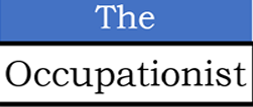An audio call does not cause as much fatigue as does a video call. Satya Nadella, CEO, Microsoft says, “Thirty minutes into your first video meeting in the morning, because of the concentration one needs to have on video, you’re fatigued.”
Fatigue is extreme tiredness experienced by a person that can happen due to multiple causes.
Video Call Fatigue (VCF) is one of the big fallouts of the covid pandemic.
Why does VCF happen? I think there are multiple reasons – the eyestrain due to the continuous screen time, sitting too long, too many meetings, too many dull meetings, too many unproductive meetings, and the stress of knowing that there are eight to ten more video meetings for the day.
Every little thing adds up.
The stress of working in extremely uncomfortable working conditions also fatigues you – for most work from a bedroom, or a small living room.
Employees are expected to perform their tasks without the freedom to let their minds (and bodies) roam. Also, there is adjustment to be made for a working spouse and children who are online.
In one of the companies I worked, I had allowed, after aligning with the senior management, employees to stand and watch a presentation if prolonged sitting caused them discomfort. This is not possible in video calls as it may appear rude.
What is the way out?
While working from home, minimize your video calls, instead simply switch over to audio call in between after having prior understanding. This will give your eyes a much wanted break and help in reducing the fatigue. One could even walk around during the audio calls. Try to reduce the number of calls and/or make the calls short in duration.
Talk to your line manager about these calls and the effect they are having on you. No two individuals are alike; everyone is unique and have different effects and hence different requirements.
The OH physician in a company can sensitize the line managers and the senior management to the possibility of VCF and steps to be taken.
Additionally, the OH physician can contribute to early reopening of offices by encouraging vaccinations, making robust ‘return to office’ protocols to reassure employees to come back to offices.
Once offices reopen, it is expected that video calls will drop to pre-pandemic levels and this will reduce the incidence of VCF.
However motivated one is, too many video calls can make people ‘switch off’ in addition to causing fatigue. This is a kind of presenteeism, where the employee is there, yet not there, and hardly contributing. Work from home for many is sleep at work!
The OH physician in a company can sensitize the line managers and the senior management to the possibility of Video Call Fatigue and steps to be taken.
Nadella believes all those video meetings are merely transactional.
Inspired, creative work happens in casual conversations before and after meetings. At times, in bars and pubs, too.
Many CEOs are worried and predict that working from home is ‘productivity disaster’.
I feel it is too early to say if working from home would be a ‘innovation disaster’ as well?
The OH physician can contribute to early reopening of offices by encouraging vaccinations and making robust ‘return to office’ protocols to reassure employees to come back to offices.
The other practical option to mitigate the risk of VCF is to venture out of the comfort or discomfort of homes and start working from offices, at least few days in a week to start with. With increase in vaccination among the population coming to offices shouldn’t be as scary as it was during the start of pandemic.
There are ‘return to office’ protocols most good offices will have that incorporate add-on safety features that minimize chances of contracting the virus and protecting your health.
Meet your colleagues and collaborate in the office, even if it is with masks on. It will lessen the fatigue in general that has set in and specifically the VCF (Video Call Fatigue).
In case of any query, or assistance in return to office protocols, contact
_________________________________________________________________________________________________________
Dr Ajay Sati is an Occupational Health physician who prefers to describe himself as an Occupationist, to denote, ‘an expert in diseases and other concerns of occupations’. Dr Sati has managed health and wellness programs in industries he worked, like the atomic energy, and energy (oil & gas) in India and overseas. He was involved in many greenfield and brownfield projects providing inputs from health point of view. Known for SOPs and protocols, he is currently involved with an energy MNC in designing protocols to support employees during the covid pandemic, and protocols to safely reopen offices and plants.



